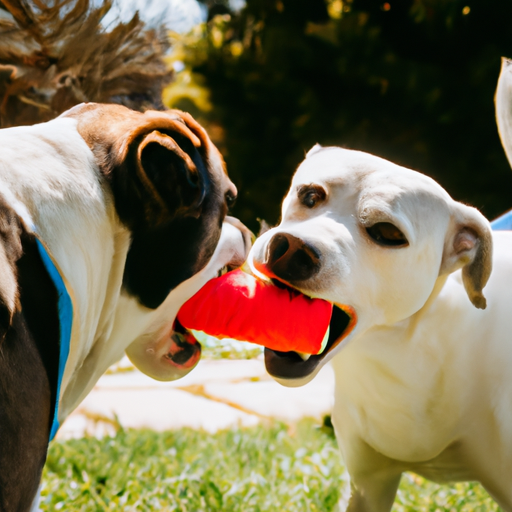As a dog caregiver, you’ve likely observed the multifaceted nature of your canine companion’s communication style. Among the barks, whines, and howls, growling is a common sound that dogs emit, and it can sometimes be a source of concern. But did you know that growling isn’t always a sign of aggression? Let’s delve into the fascinating world of dog communication and address a common question: Do dogs growl when they play?
Understanding Dog Communication
Understanding your dog’s language is crucial for building a strong bond and ensuring their well-being. Unlike humans, dogs primarily communicate through body language and vocalizations, such as barking, growling, and whining.
- Barking: Dogs bark for various reasons such as alerting their owners to potential danger, expressing excitement, or seeking attention.
- Growling: Growling can indicate a range of emotions, from fear and aggression to playful excitement.
- Whining: This typically signifies that a dog is anxious, excited, or seeking attention.
The context in which these sounds occur is key to interpreting their meaning.
The Significance of Growling in Dogs
Growling is a form of vocal communication that dogs use for various reasons. It can be a sign of:
- Aggression: If a dog growls with its body rigid, ears flattened, and teeth exposed, it’s a clear signal to back off.
- Fear: Dogs might growl when they feel threatened or scared.
- Discomfort: If your dog growls when you touch a specific area, it might indicate pain.
- Playfulness: Yes, dogs also growl when they play! This is typically accompanied by relaxed body language and wagging tails.
Growling During Play: What Does It Mean?
When dogs play, they often use growling as a form of communication. It’s a way for them to express excitement and enjoyment, and it’s completely normal behavior. You’ll often hear dogs growling during play when they’re engaged in games like tug-of-war or wrestling.
Here’s a quick comparison between aggressive growling and playful growling:
| Aggressive Growling | Playful Growling | |
|---|---|---|
| Body Language | Rigid, ears flattened, teeth exposed | Relaxed, tail wagging |
| Sound | Low, rumbling growl | High-pitched, broken growl |
| Context | In response to a threat or discomfort | During play sessions |
How to Distinguish Between Playful and Aggressive Growling
Identifying the difference between playful and aggressive growling is crucial for ensuring the safety and well-being of both you and your dog. Here are some signs to look out for:
- Body language: A dog that’s growling out of aggression will usually have a stiff body and may show its teeth. On the other hand, a dog that’s growling during play will be loose and relaxed, and its tail will often be wagging.
- The sound of the growl: Aggressive growls are typically low and constant, while playful growls may be higher in pitch and broken up with barks or other sounds.
- The context: If the growling occurs during a play session with toys or other dogs, it’s likely to be playful. If it happens when a dog is eating or sleeping, it’s more likely to be aggressive or fear-based.
Frequently Asked Questions (FAQ)
1. Why does my dog growl when we play tug-of-war?
– This is a common behavior seen in dogs during play. It’s a way for them to express their excitement and does not typically indicate aggression.
2. Is it bad to let my dog growl during play?
– Not at all. As long as the growling is playful and not aggressive, it’s a healthy part of their communication.
3. What should I do if my dog’s play growling becomes aggressive?
– If you notice signs of aggression, it’s best to immediately stop playing and give your dog some space to calm down. If this behavior continues, consider consulting a professional dog trainer or behaviorist.
Remember, growling is a form of communication for dogs, and it’s not always a sign of aggression. By understanding the nuances of your dog’s growls, you can ensure a happy and healthy relationship with your furry friend.



